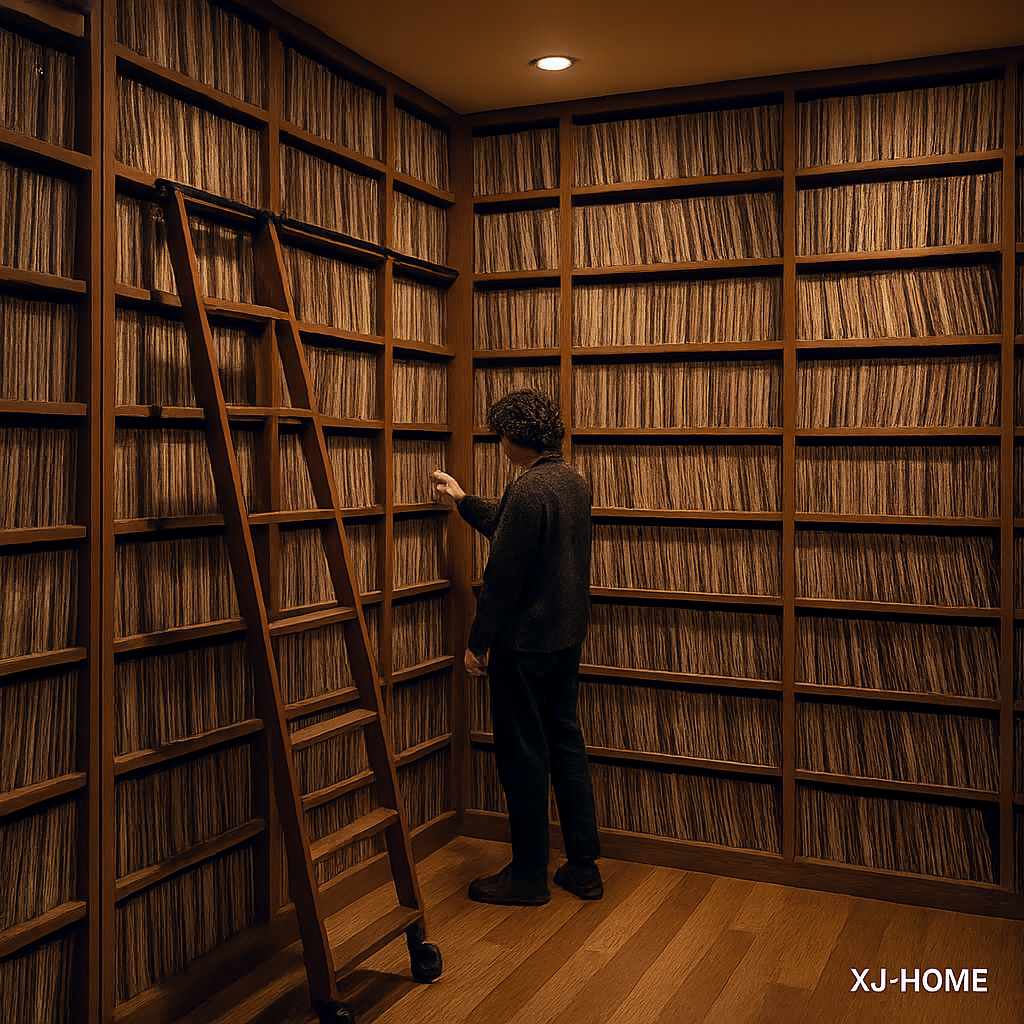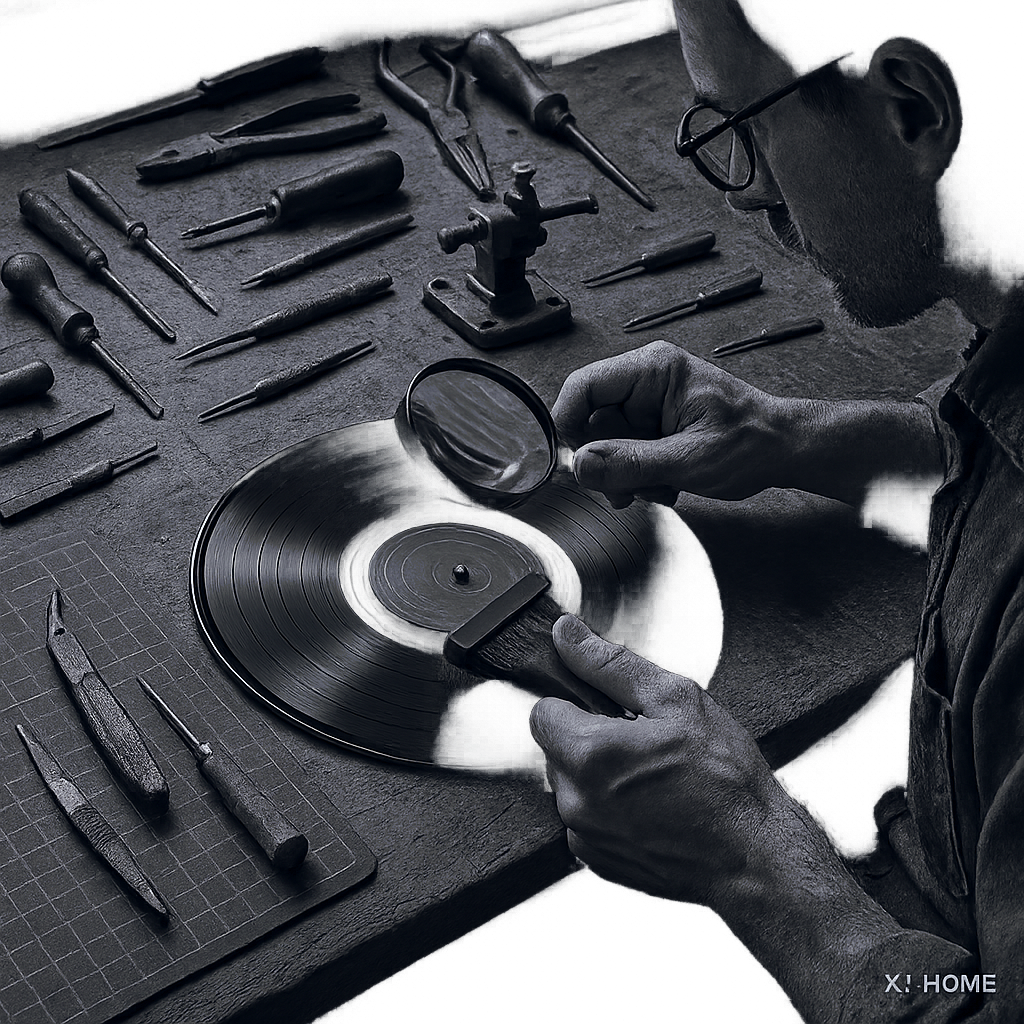In the intricate dance of components that make up a vinyl playback system, the platter is often an unsung hero. We obsess over cartridges, tonearms, and phono stages, yet the very surface our precious records rest upon can have a profound impact on the final sound. For the dedicated audiophile, the pursuit of sonic perfection is a journey of incremental gains, and a platter upgrade can be one of the most significant—and satisfying—steps along that path.
But why bother? Isn't a platter just a spinning disc? Let's move beyond such inertial thinking. At XJ-HOME, we believe that understanding the first principles of audio reproduction is key to making meaningful improvements. A platter upgrade isn't merely about aesthetics; it's about addressing fundamental issues of stability, resonance, and energy transfer.
Why the Platter Really Matters: Stability, Resonance, and the Record Interface
The platter serves several critical functions, each directly influencing what you hear:
-
Rotational Stability & Speed Consistency:
-
The Flywheel Effect: This is perhaps the most intuitive benefit. A heavier, well-balanced platter possesses greater inertia. Once set in motion, it resists small speed variations from the motor or drag from the stylus, leading to more consistent rotational speed. This translates directly to reduced wow and flutter (audible pitch variations), allowing notes to sustain with greater purity and rhythms to lock in with more precision. Think of it like a figure skater extending their arms to slow a spin versus pulling them in to accelerate – mass and its distribution are key.
-
Material Density and Uniformity: It's not just about total mass, but also how uniformly that mass is distributed. A platter machined from a dense, homogenous material will spin more smoothly and with less inherent wobble or imbalance than one made from less consistent or lighter materials.
-
-
Resonance Damping & Vibration Control:
-
The Platter as a Barrier: The turntable motor and main bearing are sources of mechanical vibration. A well-designed platter, particularly one made from acoustically inert materials, helps to isolate the record and stylus from this unwanted energy, preventing it from muddying the musical details.
-
The Platter as a Sink: Vibrations aren't just generated by the turntable's mechanics. The stylus tracing the groove creates vibrations within the record itself, and airborne sound waves can also impinge upon the vinyl. An ideal platter material will effectively damp these vibrations, preventing them from reflecting back into the stylus or causing the record to resonate sympathetically. Different materials achieve this to varying degrees. For a deeper dive into how materials interact with vibrations, understanding concepts like acoustic impedance can be enlightening, as it explains how energy is transferred (or reflected) between different materials.
-
-
The Record Interface:
-
A Stable, Non-Resonant Foundation: The record needs to lie perfectly flat on a surface that doesn't add its own sonic signature. If the platter itself "rings" or has resonant peaks, these can color the sound.
-
Material Interaction: The way the platter material supports and damps the vinyl itself is crucial. Some materials are thought to provide a better impedance match to the vinyl, effectively "grounding" unwanted vibrations within the record. This is why platter mats are also a popular upgrade, as they further refine this interface, but an inherently well-damped platter provides a better starting point.
-
A Material World: Common Platter Upgrades and Their Characteristics
The choice of platter material is a critical decision, with each option offering a different balance of mass, damping, and sonic character:
-
Acrylic Platters:
-
Pros: Widely popular for good reason. Acrylic (polymethyl methacrylate, or PMMA) is known for its excellent internal damping and a resonant frequency profile that many believe is similar to vinyl itself. This can lead to a natural, detailed sound, often allowing the platter to be used without a mat. They also offer a clean, modern aesthetic.
-
Cons: Typically lighter than metal platters of similar thickness, so they might offer less of a flywheel effect unless they are quite substantial. Static electricity can sometimes be an issue, though anti-static record brushes and proper humidity control can mitigate this.
-
-
Metal Platters (Aluminum, Steel, Alloys):
-
Pros: Can offer significant mass, contributing to excellent speed stability. Aluminum is common, often precision-machined for balance. Heavier metals like steel or specialized alloys can provide even greater inertia.
-
Cons: Metals, particularly harder alloys, can be prone to ringing if not properly damped. This is why they are almost always used with a mat (cork, rubber, felt, or composite) to tame resonances. The specific alloy and its thickness will greatly influence its sonic properties.
-
-
Delrin® (POM - Polyoxymethylene) Platters:
-
Pros: Delrin is an engineering thermoplastic known for its high stiffness, low friction, excellent dimensional stability, and good damping characteristics. Sonically, it's often described as neutral to slightly warm, with excellent detail retrieval and a very "black" background due to its inertness.
-
Cons: Can be more expensive to machine and procure than acrylic or basic aluminum, placing it in a more premium upgrade category.
-
-
Glass Platters:
-
Pros: Can be manufactured to be very flat and are relatively dense. Often found on turntables from brands like Rega.
-
Cons: Glass is inherently resonant and can impart a "bright," "hard," or "etched" quality to the sound if not paired with an appropriate mat (felt is common) to damp its ringing.
-
-
Constrained Layer Damping (CLD) / Composite Platters:
-
Pros: These are often found in higher-end turntables or as premium aftermarket upgrades. They involve sandwiching different materials (e.g., layers of aluminum and acrylic, or other specialized polymers) to combine the benefits of mass, stiffness, and damping in a highly controlled way. The goal is to create a platter that is both massive and acoustically dead.
-
Cons: Complexity and material costs usually mean these are among the most expensive options.
-
-
Don't Forget the Sub-Platter!
-
On many turntables, particularly those from brands like Rega, Pro-Ject, and others with a two-part platter system, the sub-platter is equally critical. This is the component that the main platter rests on and which is directly connected to the bearing and driven by the belt. Stock sub-platters are often made of plastic (phenolic resin or similar). Upgrading to a precision-machined aluminum, stainless steel, or Delrin sub-platter can yield significant improvements in rotational accuracy, reduced noise, and overall stability, directly benefiting the performance of the main platter itself.
-
Before You Leap: Key Considerations for a Platter Upgrade
A platter upgrade isn't always a simple drop-in replacement. Careful consideration is required:
-
Compatibility is King:
-
Spindle Diameter & Height: The new platter must match your turntable's spindle diameter precisely. The height of the spindle relative to the top of the platter is also important.
-
Platter Height/Thickness & VTA: This is crucial. If your new platter is thicker or thinner than the original, it will change the Vertical Tracking Angle (VTA) of your stylus. If your tonearm doesn't have an adjustable VTA (many budget and mid-level arms do not), you must choose an upgrade platter of the exact same thickness as your original, or be prepared to use shims (which can be fiddly) or accept a potentially compromised sound.
-
Bearing Design: Some turntables have platters that are integral to the bearing assembly. These are generally not user-upgradeable. Always check with the turntable manufacturer or reputable third-party upgrade specialists.
-
Motor Capability: A significantly heavier platter might strain a motor designed for a lighter load. While many motors have enough torque, it's a factor to consider, especially on very budget-oriented turntables.
-
-
Mass and Potential Strain:
-
While mass is generally good for speed stability, an excessively heavy platter on a bearing not designed for it could lead to premature wear. Reputable upgrade manufacturers usually design their platters with the specific turntable's capabilities in mind.
-
-
System Synergy:
-
Consider the overall sonic character of your system. If your system is already on the brighter side, adding a platter known for a very "live" or "energetic" presentation (like some undamped metal platters) might be too much. An acrylic or Delrin platter might offer a more balanced or slightly warmer counterpoint.
-
-
The Platter Mat Question:
-
Your existing mat might not be the best partner for your new platter. Some upgrade platters (especially acrylic or Delrin) are designed to be used without a mat. If your new platter is metal or glass, experimenting with different mat materials (cork, rubber, leather, felt, composite) can be a rewarding tweak in itself.
-
The XJ-HOME Perspective: Informed Choices for Tangible Results
At XJ-HOME, we champion upgrades that offer genuine, audible improvements. A well-chosen platter upgrade, carefully matched to your turntable and system, can deliver a startling increase in clarity, a lower noise floor, improved dynamics, and more stable, focused imaging. It allows you to hear deeper into the recording, revealing nuances you might have missed.
We encourage you to explore the resources on https://xenonjade.com for more insights into turntable setup and system optimization. The journey of refining your vinyl playback is one of discovery, and understanding the role of each component is paramount.
Conclusion: Elevating Your Listening Experience
Upgrading your record player's platter is more than just a cosmetic change; it's a fundamental enhancement to its mechanical and resonant properties. By improving rotational stability and reducing unwanted vibrations, a new platter can unlock a new level of performance from your vinyl collection.
The key is research and compatibility. Understand the design of your turntable, the properties of different materials, and how a new platter will interact with your tonearm and cartridge. When chosen wisely, it’s an upgrade that can bring you significantly closer to the music, which, after all, is the ultimate goal of our shared passion.





Leave a comment
All comments are moderated before being published.
This site is protected by hCaptcha and the hCaptcha Privacy Policy and Terms of Service apply.